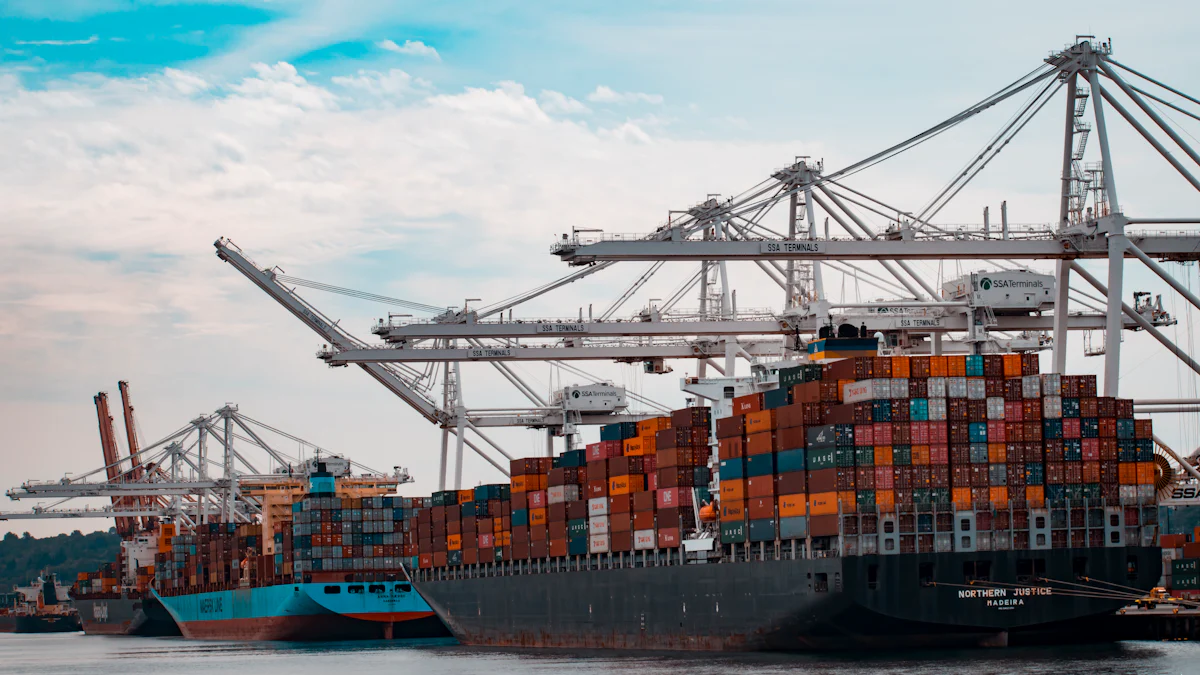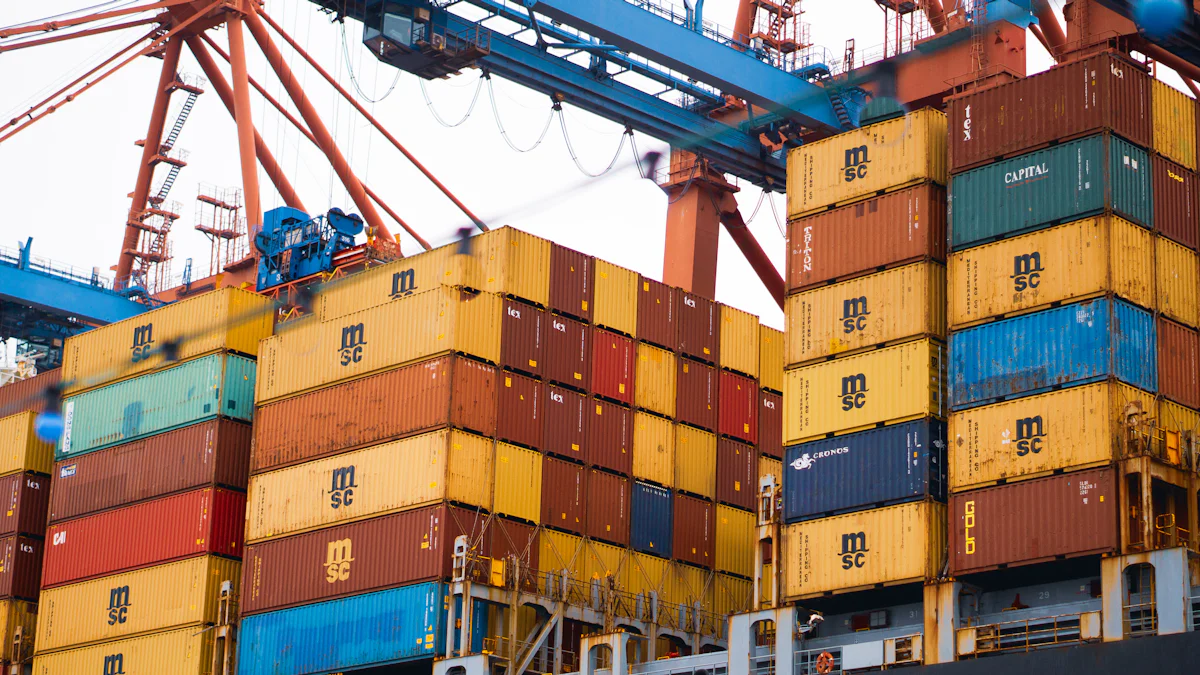Steps to Optimize Your Supply Chain with LCL Shipping

Introducing Less than Container Load (LCL) shipping opens doors to efficient supply chain management. Optimizing the supply chain is crucial for businesses aiming for streamlined operations. This blog will delve into the steps necessary to enhance your supply chain through LCL shipping, ensuring cost-effectiveness and improved inventory control.
Understanding LCL Shipping

What is LCL?
LCL, short for Less than Container Load, refers to a shipping method where multiple small shipments from different customers are consolidated into a single container. This consolidation process allows businesses with smaller freight volumes to benefit from cost-effective transportation solutions. By sharing container space, companies can avoid the expenses associated with booking an entire container for their goods.
Benefits of LCL
Cost-Effectiveness: Utilizing LCL shipping can significantly reduce costs for businesses that do not have enough cargo to fill an entire container. This method enables companies to pay only for the space they use, making it a budget-friendly option.
Inventory Management: LCL plays a crucial role in optimizing inventory management practices. Businesses can ship smaller quantities more frequently, ensuring better control over stock levels and reducing excess inventory costs.
How LCL Works
Consolidation Process
When opting for LCL shipping, individual shipments are collected and grouped together at a consolidation warehouse. Once there is enough cargo to fill a container, these shipments are loaded and transported as one unit. This process streamlines logistics operations and ensures efficient utilization of container space.
Documentation Required
To facilitate an LCL shipment, businesses need to provide specific documentation such as commercial invoices, packing lists, and bill of lading. These documents are essential for customs clearance and compliance with international trade regulations.
Importance of LCL in Supply Chain
Cost-Effectiveness
For businesses looking to optimize costs, LCL shipping offers a viable solution. By sharing container space with other shippers, companies can benefit from reduced transportation expenses without compromising on service quality.
Inventory Management
Implementing LCL services helps in anticipating a more fragmented spread of sourcing and nearby shoring. This approach provides businesses with better control over inventory levels and enables them to adjust stock quantities based on demand fluctuations.
Implementing LCL in Your Supply Chain
Assessing Your Needs
When analyzing shipping volume, businesses must carefully evaluate their cargo requirements to determine the most cost-effective and efficient shipping method. By assessing the quantity of goods to be transported, companies can optimize their logistics processes and minimize unnecessary expenses. This strategic approach ensures that resources are utilized effectively, enhancing overall supply chain performance.
To identify suitable shipments, businesses should categorize their products based on size, weight, and destination. By classifying goods according to specific criteria, companies can streamline the shipping process and allocate resources more efficiently. This targeted approach enables businesses to match shipments with the most suitable transportation methods, ensuring timely delivery and customer satisfaction.
Choosing the Right LCL Provider
Evaluating service quality is essential when selecting an LCL provider. Companies should assess factors such as transit times, reliability, and customer support to ensure a seamless shipping experience. By partnering with a reputable provider, businesses can enhance supply chain efficiency and build long-term relationships based on trust and reliability.
When comparing prices, companies should consider not only the immediate costs but also the overall value offered by different providers. While competitive pricing is important, businesses must also evaluate additional services, such as tracking capabilities and insurance options. By conducting a comprehensive price analysis, companies can make informed decisions that align with their budgetary constraints and operational needs.
Integrating LCL with Technology
Utilizing data analytics is crucial for optimizing supply chain operations through LCL consolidation. By leveraging data-driven insights, businesses can identify trends, forecast demand fluctuations, and improve decision-making processes. Data analytics enables companies to enhance efficiency, reduce costs, and drive continuous improvement within their supply chains.
Implementing blockchain and IoT technologies can further enhance the benefits of LCL shipping. Blockchain offers secure data sharing capabilities that increase transparency and traceability throughout the supply chain. IoT devices provide real-time monitoring of shipments, enabling proactive problem-solving and risk mitigation strategies. By integrating these technologies into their operations, businesses can achieve greater visibility, efficiency, and sustainability in their supply chain management practices.
Optimizing Costs and Sustainability

Negotiating Rates
When investigating LCL freight prices, businesses delve into the cost structures associated with shipping smaller volumes via LCL. Understanding the pricing mechanisms enables companies to make informed decisions regarding their transportation expenses. By comparing different rates offered by various providers, businesses can identify cost-effective solutions that align with their budgetary constraints.
To implement cost-saving strategies, businesses must analyze their shipping needs and identify areas where expenses can be minimized. By optimizing packaging methods and shipment consolidation, companies can reduce unnecessary costs associated with LCL shipping. This strategic approach ensures that resources are utilized efficiently, leading to overall cost savings in supply chain operations.
Enhancing Efficiency
Flexible shipping frequency plays a vital role in optimizing supply chain processes through LCL services. By adjusting shipment schedules based on demand fluctuations, businesses can enhance operational efficiency and reduce lead times. This flexibility allows companies to respond quickly to changing market conditions and customer requirements, ensuring timely delivery of goods.
When it comes to balancing inventory, businesses must maintain optimal stock levels to meet customer demands while minimizing excess inventory costs. Utilizing LCL shipments enables companies to ship smaller quantities more frequently, preventing stockouts and overstock situations. This balanced approach to inventory management enhances supply chain efficiency and improves overall business performance.
Sustainability Benefits
The concept of CO2 neutrality is a significant advantage of utilizing LCL shipping in supply chain operations. By consolidating multiple small shipments into one container, businesses reduce the carbon footprint associated with transportation. This environmentally friendly approach contributes to sustainability efforts and aligns with green initiatives aimed at reducing greenhouse gas emissions.
Furthermore, emissions reduction is a key sustainability benefit of implementing LCL services in the supply chain. By optimizing cargo space utilization and reducing empty container movements, businesses minimize fuel consumption and lower emissions levels. This proactive approach towards environmental responsibility not only benefits the planet but also enhances the reputation of companies committed to sustainable practices.
Recap of Key Points:
Businesses benefit from cost-effective solutions through LCL shipping.
LCL enhances inventory management practices for better control.
Utilizing data analytics optimizes supply chain operations efficiently.
Restatement of Benefits:
LCL shipping offers budget-friendly transportation options.
Improved inventory control leads to reduced excess costs.
Enhanced efficiency and sustainability contribute to a greener supply chain.
Suggestions for Future Steps:
Explore testimonials showcasing successful LCL implementations.
Consider integrating blockchain and IoT technologies for advanced optimization.
Continuously assess and adjust shipping strategies for ongoing improvements.
See Also
Unveiling 5 Cutting-Edge Strategies for Supply Chain Optimization
Maximizing Savings: The Economics of Supply Chain Optimization
Navigating Success: Enhancing Supply Chains Through Risk Management
Ensuring Excellence: Top Strategies for Supply Chain Optimization
Unleashing Efficiency: Insider Tips for Optimizing Logistics
